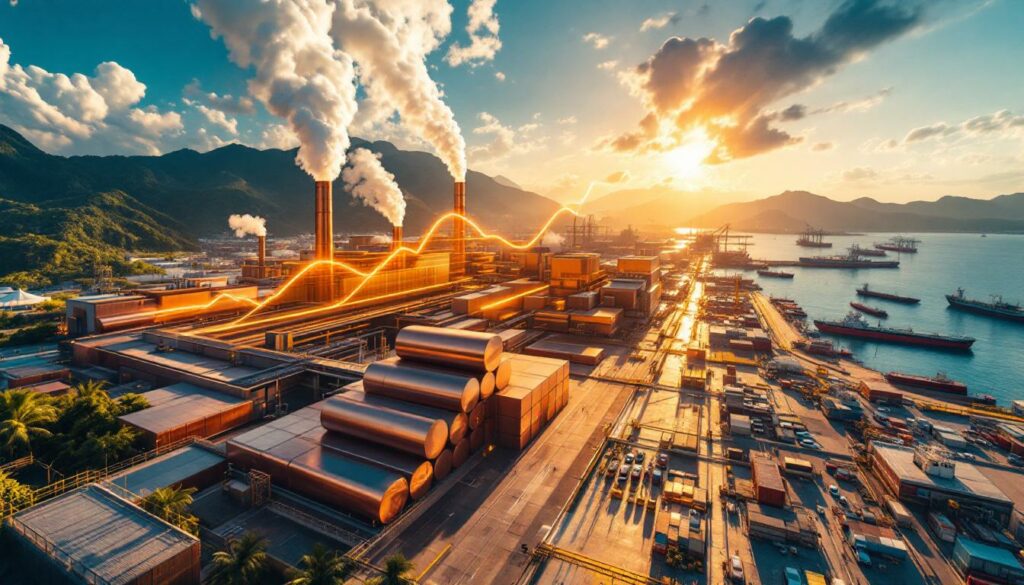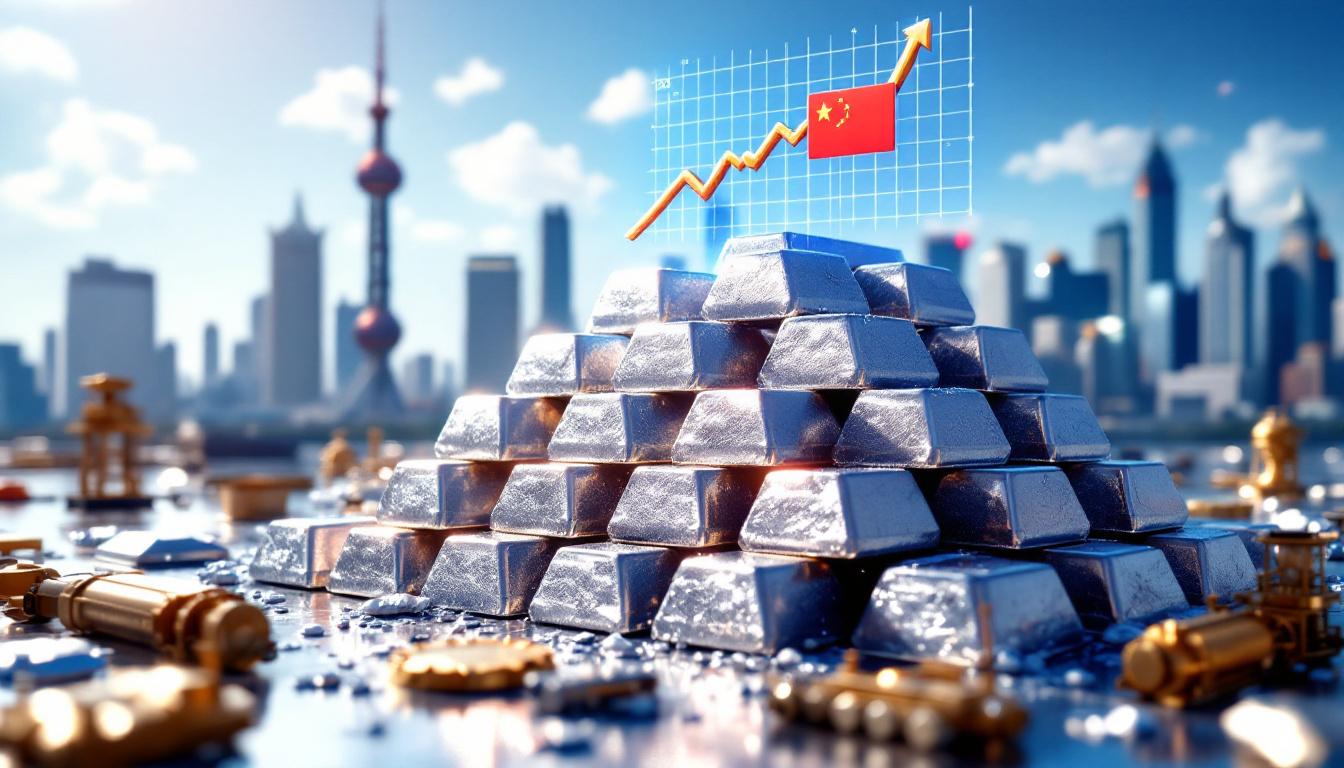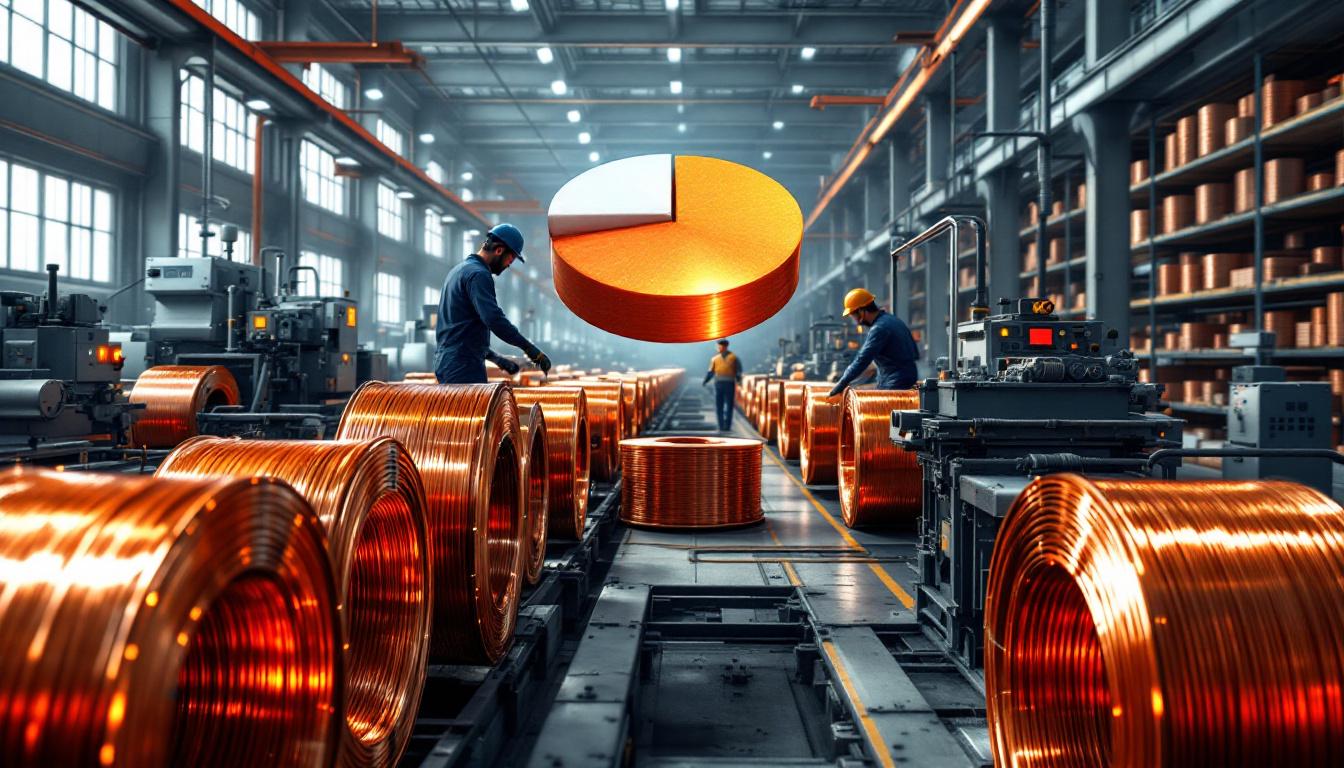What Is Driving Indonesia's Copper Smelting Growth?
Indonesia's metals processing sector has witnessed a remarkable transformation over the past decade. The country's nickel smelters have attracted more than $80 billion in investment, establishing Indonesia as a global nickel processing powerhouse. This success story is now extending to the copper industry, which has secured over $9 billion in recent investments as Indonesia positions itself to become a significant player in global copper refining.
This strategic expansion comes at a critical moment in global metals markets. The International Energy Agency (IEA) projects global refined copper demand to reach 27 million metric tons in 2024, with expectations of growth to 31 million metric tons by 2030—a crucial timeline for nations building processing capacity.
"I expect that we will see more copper smelters, but this will only happen with adequate financing and long-term investment commitments," notes Anindya Bakrie, Chairman of the Indonesian Chamber of Commerce and Industry.
The Shift from Nickel to Copper Investment
Indonesia's success in developing its nickel industry has created both a template and momentum for copper sector growth. While nickel development was driven primarily by battery production needs, copper's expansion connects to a broader range of applications spanning multiple industries.
The transition from nickel to copper reflects Indonesia's maturing approach to resource development. Rather than exporting raw materials, the country is systematically building processing capacity across its mineral portfolio, capturing more value domestically while integrating into global supply chains.
Global Copper Demand Trends
The surge in copper investments coincides with unprecedented global demand growth. As the metal with the second-highest electrical conductivity after silver, copper remains irreplaceable in critical applications spanning power transmission, electronics, and transportation.
Several factors are driving this demand spike:
- Electrification: Power grid expansions worldwide require massive quantities of copper wiring
- Renewable energy: Solar and wind installations use 4-5x more copper than traditional power generation
- Electric vehicles: Each four-wheeled EV contains approximately 83 kg of copper, while two-wheeled EVs require about 4 kg
- Data centers: The digital infrastructure boom requires substantial copper for power systems and cooling
Irwandy Arif, advisor at the Indonesian Mining Institute, emphasizes copper's irreplaceable role: "Unlike some other materials, copper's conductivity properties make it extremely difficult to substitute in electrical applications, creating sustained demand growth even as prices rise."
How Does Indonesia's Copper Industry Compare Globally?
Despite ranking 10th globally with substantial copper reserves of 220.3 million metric tons, Indonesia's refined copper output currently ranks only 16th in the world. This creates a significant gap between resource potential and processing capability—a disparity that has attracted investor interest in Indonesia's copper smelting industry.
"This gap underscores significant investment potential in Indonesia's copper refining sector," explains Pandu Setiabudi, researcher at Petromindo. The situation becomes even more striking when compared to countries like Japan, South Korea, and Germany, which have developed sophisticated copper processing industries despite having no natural reserves of their own.
Current Processing Capacity vs. Natural Resources
Indonesia currently operates just four copper smelters, a stark contrast to its more than 50 nickel smelters. This limited processing infrastructure has historically meant exporting copper concentrate to overseas refineries, missing value-addition opportunities.
The country's copper resources are substantial, with several world-class deposits primarily located in Papua and West Nusa Tenggara provinces. These high-grade deposits offer competitive advantages in terms of extraction costs and concentrate quality.
Strategic Expansion Projects
Major projects are rapidly transforming Indonesia's copper processing landscape:
-
Freeport Indonesia's Gresik facility (East Java Province)
- Input capacity: 1.7 million metric tons of copper concentrates
- Output capacity: 650,000 metric tons of copper cathode
- Investment: 560 trillion Indonesian rupiah
-
Amman Mineral's smelter (West Nusa Tenggara Province)
- Input capacity: 900,000 metric tons of concentrate
- Output capacity: 220,000 metric tons of copper cathode
- Began production: March 2025
-
Batutua Tembaga Raya facility
- Established processor with steady production
-
PT Smelting
- Joint venture between Mitsubishi Materials and Freeport Indonesia
- Long-standing operation with established market presence
These facilities represent a substantial leap in Indonesia's copper processing capability, potentially moving the country from 16th to 5th globally in copper cathode production once fully operational.
Why Are Investors Increasingly Interested in Indonesian Copper?
Investment in Indonesia's copper industry is being driven by a powerful combination of domestic demand growth, infrastructure development, and strategic positioning within Asian supply chains.
Electric Vehicle Growth Potential
Indonesia's domestic EV market is experiencing dramatic growth, with four-wheeled EV sales tripling year-over-year to 16,770 units in Q1 2025. This surge follows government incentives and increasing consumer adoption of electric mobility.
Industry forecasts suggest annual sales could reach 195,000 four-wheeled EVs and an impressive 5 million two-wheeled EVs by 2030. This growth trajectory creates substantial copper demand:
| Vehicle Type | Copper Content | 2030 Units | Total Copper Demand |
|---|---|---|---|
| Four-wheeled EVs | 83 kg/unit | 195,000 | ~16,185 metric tons |
| Two-wheeled EVs | 4 kg/unit | 5,000,000 | ~20,000 metric tons |
As Indonesia positions itself as Southeast Asia's EV manufacturing hub, this domestic demand provides a solid foundation for copper processing investments, reducing dependence on export markets.
Infrastructure Development Opportunities
As the world's largest archipelagic nation, Indonesia faces unique infrastructure challenges. In May 2025, the government announced an ambitious plan to construct 47,758 kilometers of new transmission cables connecting its main islands.
This massive infrastructure project aims to create a unified power grid and will require substantial copper resources. The sheer scale of this initiative represents one of the largest copper consumption opportunities in the Asia-Pacific region over the next decade.
Beyond power transmission, Indonesia's rapidly growing data center industry—driven by digital economy expansion—creates additional copper demand for cooling systems, power distribution, and networking infrastructure.
What Are the Current Production Capabilities and Targets?
Indonesia's copper cathode production is undergoing significant expansion, though operational challenges have affected near-term output targets.
Major Production Facilities
Freeport Indonesia's smelter, which resumed operations in late May 2025 following a fire in October 2024, is currently operating at 40% capacity. The company is implementing a phased recovery plan:
- Phase 1 (May-July 2025): 40% operational capacity
- Phase 2 (August-October 2025): 70% operational capacity
- Phase 3 (November-December 2025): 100% operational capacity
The company plans to produce 415,000 metric tons of copper cathode in 2025 despite these challenges, demonstrating the facility's strategic importance to Indonesia's copper sector.
Meanwhile, Amman Mineral began producing copper cathode in March 2025 and is currently optimizing equipment to achieve full operational capacity. The facility represents Indonesia's newest major copper processing investment and incorporates advanced environmental technology.
Production Outlook
According to Katri Krisnati of Freeport Indonesia, "Indonesia will produce at least 1.1 million metric tons of copper cathode annually in the short term, elevating the country's global ranking from sixth to fifth."
This output would represent a significant advancement in Indonesia's position in the global copper market. For context, this production level would place Indonesia behind only:
- China
- Chile
- Japan
- United States
Such positioning would establish Indonesia as a key player in Asian copper supply chains, particularly for electronics manufacturing and battery production. Furthermore, the US copper production overview shows that Indonesia could potentially close the gap with the fourth-ranked producer in the coming years.
What Processing Gaps Remain in Indonesia's Copper Industry?
Despite recent investments, Indonesia's copper value chain still has significant gaps that represent both challenges and opportunities for future development.
Value-Added Product Opportunities
Indonesia currently lacks copper processing facilities capable of producing higher-value products such as:
- Sintered copper components for automotive electrical systems
- Copper powder for printed circuit boards (PCBs)
- Materials for electronic or RFID tags
- Copper foil for lithium-ion battery anodes
- High-purity copper wire for specialized electronics
The country's existing copper processing facilities primarily produce copper anode (used for decorative coatings) and copper cathode (typically further processed into EV batteries and other applications), indicating significant room for vertical integration and value addition.
Irwandy Arif notes that "while cathode production is an important step, the real value multiplier comes from converting copper into specialized components for electronics and automotive applications." This value gap represents a potential multiplier effect of 3-5x over cathode values.
Investment Challenges and Opportunities
Building more sophisticated copper processing facilities presents several challenges:
- Technical expertise requirements for specialized manufacturing
- Higher capital investment compared to primary smelting
- Quality control standards for high-precision applications
- Market access to electronics and automotive supply chains
However, U.S. investors have reportedly expressed interest in entering Indonesia's critical minerals sector, including copper, suggesting potential for international partnerships in expanding processing capabilities. These partnerships could provide both capital and technical expertise needed for more advanced processing.
As Anindya Bakrie emphasizes, the development of additional copper facilities "will only happen with adequate financing and long-term investment commitments." This highlights the need for strategic investment frameworks that can attract both domestic and international capital.
How Does Indonesia's Copper Industry Connect to Its EV Strategy?
Indonesia's copper sector expansion forms a critical component of the country's broader electric vehicle manufacturing strategy, complementing its established nickel industry.
Battery Manufacturing Integration
Indonesia currently has only one EV battery production facility in West Java Province, with a second factory scheduled for completion in 2026. These facilities require substantial copper inputs for:
- Battery components: Copper foil for anode current collectors
- Cell connections: Copper tabs and terminals
- Thermal management systems: Copper heat exchangers and cooling plates
- Power distribution: Copper busbars and cables
Copper typically represents approximately 10% of a lithium-ion battery's weight, making it the second most important metal in battery production after nickel for many chemistries. Indonesia's strategic advantage lies in having domestic sources for both these critical metals.
Supply Chain Development
The development of Indonesia's copper industry represents a strategic effort to create an integrated supply chain for EV manufacturing, from mineral extraction to component production. This vertical integration approach aims to maximize the value captured within Indonesia's borders from its natural resources.
Indonesia's EV strategy encompasses:
- Upstream: Mining of nickel, copper, and other battery minerals
- Midstream: Processing of minerals into refined metals and battery-grade materials
- Downstream: Manufacturing of batteries, motors, and complete vehicles
By developing copper processing alongside nickel, Indonesia aims to control multiple critical inputs for EV production, enhancing its negotiating position with global automakers seeking manufacturing locations in Southeast Asia. The ongoing mining industry evolution further supports this strategic integration.
What Are the Market Testing Factors for Indonesia's Copper Industry?
The success of Indonesia's copper industry expansion will depend on several market factors that will be tested in the coming years.
Demand Verification
Industry experts, including Irwandy Arif, note that "the two new major smelters will serve as a litmus test for the strength of domestic and regional demand for refined copper." The market's response to this increased capacity will be crucial in determining the pace and scale of future investments.
Key demand indicators to monitor include:
- Domestic uptake by Indonesia's growing manufacturing sector
- Regional export success to electronics manufacturers in Southeast Asia
- Price premiums achieved for Indonesian copper cathode
- Capacity utilization rates at the new smelters
Freeport Indonesia's cautious approach to restoring capacity (currently operating at 40%) suggests a measured assessment of market conditions rather than rushing to full production. According to recent copper price outlook analyses, favorable market conditions may accelerate capacity expansion.
Regional Competition
Indonesia's copper industry expansion occurs within a competitive regional context, with established copper processing hubs in countries like Japan, South Korea, and China. The country's ability to differentiate its offering through cost advantages, sustainability practices, or integration with downstream industries will influence its success.
Competitive advantages Indonesia can leverage include:
- Geographic proximity to Asian manufacturing centers
- Lower energy costs compared to some regional competitors
- Integrated supply chains with domestic EV and electronics manufacturing
- Resource security from domestic copper reserves
As global supply chains increasingly emphasize resilience and diversification, Indonesia's position as an alternative processing hub offers strategic value to manufacturers seeking to reduce dependence on existing suppliers. According to a recent report by ASEAN Briefing, this diversification trend has already contributed to significant foreign direct investment growth in Indonesia's mining and smelting sectors.
FAQs About Indonesia's Copper Industry
How does Indonesia's copper production compare to its nickel industry?
While Indonesia has revolutionized its nickel industry with over 50 smelters attracting more than $80 billion in investment, its copper sector remains in earlier stages of development with just four smelters and approximately $9 billion in investment to date. However, the copper sector is following a similar development trajectory, leveraging lessons learned from the nickel industry's rapid expansion.
The nickel industry provided a blueprint for mineral processing development, demonstrating how export restrictions coupled with investment incentives can rapidly build processing capacity. Copper development benefits from this established regulatory framework and investor familiarity with Indonesia's resource sector.
What role does government ownership play in Indonesia's copper industry?
Freeport Indonesia, operator of one of the country's largest copper facilities, is majority-owned by the Indonesian government, with U.S. commodity giant Freeport-McMoRan as a significant minority shareholder. This structure reflects Indonesia's strategic approach to maintaining control over critical mineral resources while partnering with international expertise.
The government's direct stake in copper processing represents a shift from earlier resource development models that relied primarily on private investment. This approach allows the state to directly capture more value from mineral resources while ensuring processing aligns with national industrial policy objectives.
How might Indonesia's copper industry evolve by 2030?
Based on current investment trends and global demand projections, Indonesia could significantly increase its global market share in refined copper production by 2030. The country's combination of substantial copper reserves, growing domestic demand, and strategic focus on minerals processing suggests potential for continued expansion in both production capacity and product sophistication.
Key developments likely by 2030 include:
- Completion of planned smelter expansions
- Development of at least one major downstream copper product facility
- Integration with Indonesia's maturing EV manufacturing ecosystem
- Increased production of copper products for renewable energy applications
This evolution would position Indonesia as not just a supplier of refined copper but an integrated producer of copper-based components for high-growth industries. The intensifying focus on gold and copper exploration globally further supports this development trajectory.
What environmental considerations impact Indonesia's copper industry development?
While copper smelting and refining processes typically face environmental challenges related to emissions, water usage, and waste management, Indonesia's newer facilities incorporate modern technologies designed to minimize environmental impact. The country's ability to implement environmentally responsible processing technologies will likely influence both regulatory approvals and international market acceptance of its copper products.
Indonesia's copper industry development occurs within the context of the country's climate commitments, including targets to reduce greenhouse gas emissions. Future expansion projects will likely face increasing scrutiny regarding energy sourcing, waste management practices, and overall sustainability metrics. As global copper system insights demonstrate, environmental considerations are becoming increasingly central to copper industry development worldwide.
Ready to Capitalise on the Next Major Mineral Discovery?
Stay ahead of the market with real-time alerts on significant ASX mineral discoveries through Discovery Alert's proprietary Discovery IQ model, turning complex mineral data into actionable insights for investors at all experience levels. Visit our dedicated discoveries page to understand why historic mineral discoveries have generated substantial returns for early investors.




